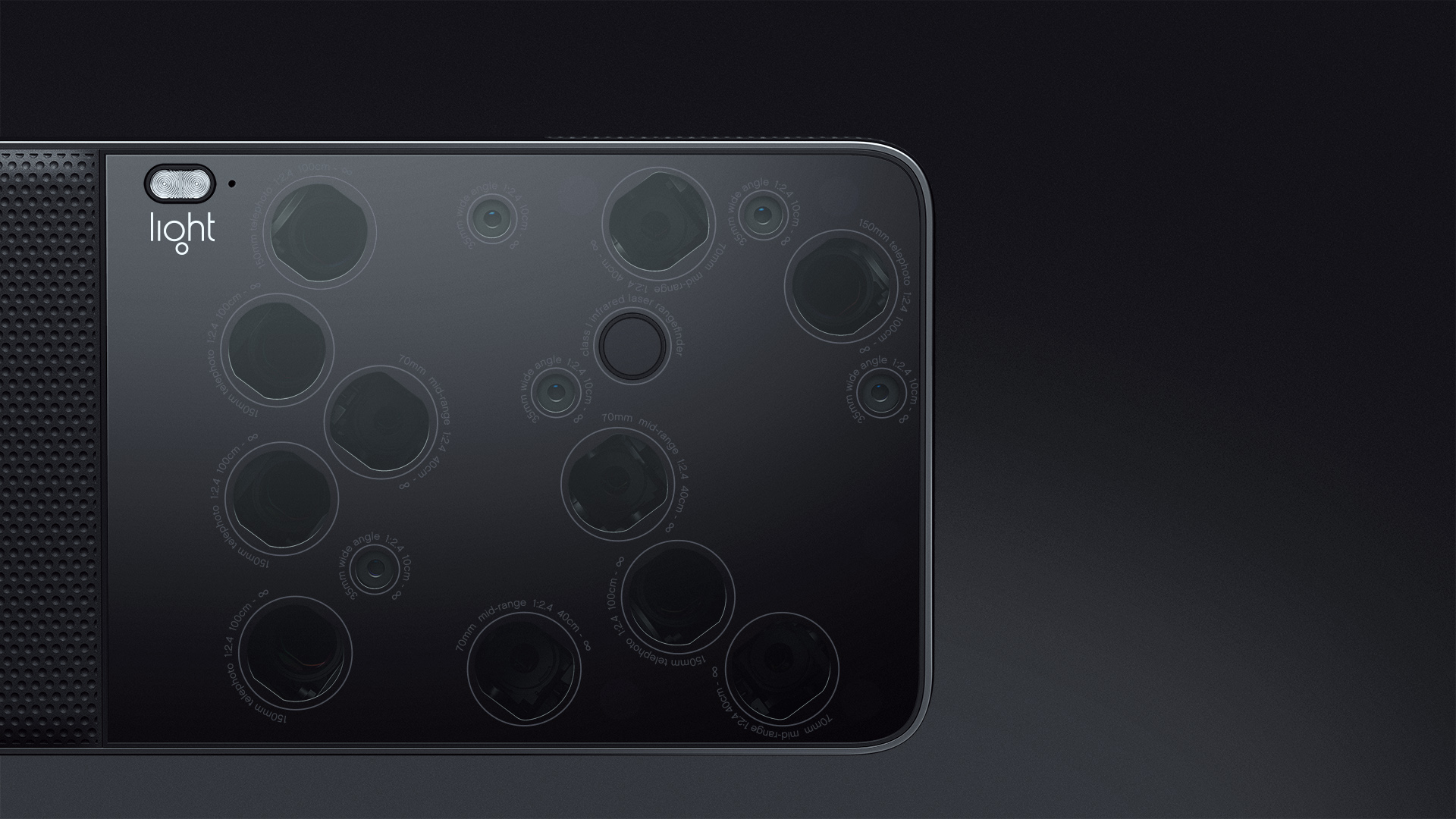Light.co announces its first multi-aperture camera
Surprisingly, this news passed by Habré (Giktayms?): The other day the American startup light.co, which has been promising to revolutionize photography for more than a year, has announced its first product: the multi-aperture camera Light L16.

Externally, the camera looks at least unusual. It's all about the idea of a gadget - instead of a single camera, 16 were built into it with different optics, different focal lengths and physically offset from each other. Depending on the selected shooting settings, the camera automatically selects a group of 10 sensors that simultaneously photograph the scene. The creators declare that due to the subsequent processing of the received photos, they can:
All this has been made possible thanks to the rapid growth in quality and cheaper camera modules that are installed in the same smartphones. Already, the iPhone camera is not far behind the SLR , and the gap continues to narrow. In my opinion, the very concept of multi-sensor cameras is extremely promising, with the potential to become the standard in the future, as it once was with multi-core in the processor. Therefore, it will be incredibly interesting to monitor how the market will adopt a new camera. By the way, the L16 is positioned as a full-fledged DSLR replacement, at least in its price range (pre-order cost about $ 1300, after the release of $ 1700), as it can give similar quality, as well as a number of other bonuses with much more compactness. The first deliveries are expected only in a year, at the end of the summer of 2016.
Video on how the camera works, with sample photos:
And here is the announcement in the company's blog: spot.light.co/light-l16-camera-launch
PS Not so long ago, Apple acquired a startup with Russian roots Linx , which is engaged in the production of camera modules from several sensors. Judging by several published results , the company managed to achieve significant growth in photo quality, and even add the ability to 3D reconstruction of the scene. So we will wait for the iPhone 7-8-9 with a multi-aperture camera.

Externally, the camera looks at least unusual. It's all about the idea of a gadget - instead of a single camera, 16 were built into it with different optics, different focal lengths and physically offset from each other. Depending on the selected shooting settings, the camera automatically selects a group of 10 sensors that simultaneously photograph the scene. The creators declare that due to the subsequent processing of the received photos, they can:
- to achieve the quality of SLR level photos with a resolution of up to 52 (!!!) megapixels
- achieve good results in low light and generally low noise
- allow the user to control the depth of focus after the photo has been taken (like Lytro's light field cameras)
- provide an extensive selection of focal lengths without changing optics
All this has been made possible thanks to the rapid growth in quality and cheaper camera modules that are installed in the same smartphones. Already, the iPhone camera is not far behind the SLR , and the gap continues to narrow. In my opinion, the very concept of multi-sensor cameras is extremely promising, with the potential to become the standard in the future, as it once was with multi-core in the processor. Therefore, it will be incredibly interesting to monitor how the market will adopt a new camera. By the way, the L16 is positioned as a full-fledged DSLR replacement, at least in its price range (pre-order cost about $ 1300, after the release of $ 1700), as it can give similar quality, as well as a number of other bonuses with much more compactness. The first deliveries are expected only in a year, at the end of the summer of 2016.
Video on how the camera works, with sample photos:
And here is the announcement in the company's blog: spot.light.co/light-l16-camera-launch
PS Not so long ago, Apple acquired a startup with Russian roots Linx , which is engaged in the production of camera modules from several sensors. Judging by several published results , the company managed to achieve significant growth in photo quality, and even add the ability to 3D reconstruction of the scene. So we will wait for the iPhone 7-8-9 with a multi-aperture camera.
